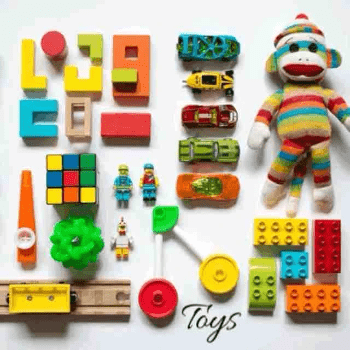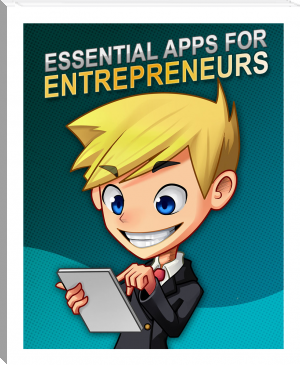Ultimate Business Guide by Roger Keyserling (always you kirsty moseley txt) 📖

- Author: Roger Keyserling
Book online «Ultimate Business Guide by Roger Keyserling (always you kirsty moseley txt) 📖». Author Roger Keyserling
Request a small-business grant. Start by checking out our guide to small-business grants. Then, head over to Grants. gov, which is a searchable, online directory of more than 1,000 federal grant programs. It might be a long process, but it doesn’t cost you any equity.
Start a crowdfunding campaign online. Sometimes power is in numbers, and a bunch of small investments can add up to something major. If you think your business might be a fit for something like Kickstarter or Indiegogo, you should read up on 10 of the best-crowdfunded businesses ever or check out the most popular crowdfunding websites.
Apply to local investor groups. Online platforms such as Gust and AngelList and local networking can help you find potential investors who relate to your industry and passion.
Solicit venture capital investors. VCs typically look for big opportunities from proven teams that need a million dollars or more, so you should have some traction before approaching them.
Join a startup incubator or accelerator. These companies are designed to help new or startup businesses get to the next level. Most provide free resources, including office facilities and consulting, along with networking opportunities and pitch events. Some, also provide seed funding as well.
Negotiate an advance from a strategic partner or customer. If someone wants your product or service bad enough to pay for it, there's a chance they'll want it bad enough to fund it, too. Variations on this theme include early licensing or white-labeling agreements.
Trade equity or services for startup help. For example, you could support a computer system for office tenants in exchange for free office space. You might not get paid for this, but you won’t have to pay for an office, either, and a penny saved is a penny earned.
Seek a bank loan or line of credit. Here are 10 questions you should ask before applying for a bank loan, including whether you will qualify. If you do meet the requirements, a good place to start for loan opportunities is the Small Business Administration.

Money.
We work for it. We buy things with it. We need it for retirement. But what is it, anyway? And what gives our money value?
Money originally took the form of a commodity such as gold or silver (or grain, in the earliest cases), and as such, it had a recognized market value.
After the introduction of banknotes and coins that lacked intrinsic value (ie, weren’t worth their weight in gold), money became representative of value rather than actually holding that value itself. This ‘representative money’ acted like a certificate to show that a certain amount of gold or silver was stored at the central bank, or treasury, in the way that notes for one pound sterling could be exchanged for one troy pound of sterling silver. In effect it was a promise by the government, or the bank on the government’s behalf, to hand over that amount of bullion.
Since 1971, the U.S. dollar has been convertible into absolutely nothing.
Since Nixon's ruling, the United States has operated on a system of fiat money, which means our currency is not tied to any other commodity. The word "fiat" originates in the Latin, the imperative of the verb facere, "to make or become." Fiat money is money whose value is not inherent but called into being by a human system. So these pieces of paper in your pocket are just that: pieces of paper.
Why then do people still work for money? The answer is legal tender laws. If you look at one of your dollars, you will notice it says, “This note is legal tender for all debts, public and private.” This means that people and businesses have to accept U.S. dollars — by law — for any debts. And of course, the U.S. government has to accept them for taxes
Modern economics no longer hangs on gold and is fairly complex.
The more a country exports (or the more valuable the exports) the more its money is valued in the global community.
The more it imports or the more valuable the imports the less its money is valued in the global community.
Social acceptance. Money holds value because you believe it does. Many economic models drop money out entirely, as an example, real business cycle models are money free.
Additionally, the amount of debt a country has accrued also devalues its money on the global market.
It is through debt and imports that inflation occurs. Ironically the more debt accrued the harder a country must work to repay as their money also devalues.

So What Is Value?
Is it a Belief? If one believes that an item has value, then it has value. The US Federal Reserve note is one example.
The values we assign to things is often a combination of utility and perception. Sometimes the usefulness of something is the primary reason we assign it value e.g. sugar, and sometimes the perception is the primary reason e.g. Gucci brand water bottle at five times the price of an equivalent bottle.
Often it's a complicated mix of both. The various inputs for perceived value are as complex and multifaceted as the human condition and all of social and philosophical history.
Someone willing to pay that amount for it. I could have something that I say is $500. If no one pays $500 for it, is it really worth $500? This is effectively the price that the market will bear.

Develop your product or service.
After all the work you've put into starting your business, it's going to feel awesome to actually see your idea come to life. But keep in mind, it takes a village to create a product. If you want to make an app and you're not an engineer, you will need to reach out to a technical person. Or if you need to mass-produce an item, you will have to team up with a manufacturer.
To me, product development is always one of the most exciting parts of owning a business.
Sometimes you might struggle to find a product or new service to offer, and aren't even sure where to start.
What's a product you hate using? Would you like to completely rebuild that product, or simply fill the gap it's missing? Just think about problems,
and then imagine what would solve that specific pain point.
Before you invest any serious time and money
into developing a product, you need to do a bit of
"Pre-sales." You need to make sure some interested buyers would buy your new service or product.
Your product will need to beat out the competition, so you need to make sure you can solve a need that other products can't.
You have to assess the costs of developing this product or service.
How big of an investment is it going to be? Do you need to hire another employee with a
specific skill set to create this product? Do you need to promote someone to handle managing this new service?
Time and development creating this product or service is something you need to map out before you sit down and invest your company's money into a new idea.
Because our business model is recurring revenue, we were able to make some accurate budget predictions on how we could afford the cost of creating a new product.
Never settle for comfortable, instead continue pursuing new avenues, develop new products, and still, keep pushing to improve.
Your best option isn’t necessarily to make the cheapest product, even if it lowers manufacturing cost. Also, you need to make sure the product can grab someone’s attention quickly.
When you are ready to do product development and outsource some of the tasks make sure you:
Retain control of your product and learn constantly. If you leave the development up to someone else or another firm without supervision, you might not get the thing you envisioned.
Implement checks and balances to reduce your risk. If you only hire one freelance engineer, there’s a chance that no one will be able to check their work. If you go the freelance route, use multiple engineers so you don’t have to just take someone at their word.
Hire specialists, not generalists. Get people who are awesome at the exact thing you want, not a jack-of-all-trades type.
Don't put all your eggs in one basket. Make sure you don’t lose all of your progress if one freelancer leaves or if a contract falls through.
Manage product development to save money. Rates can vary for engineers depending on their specialties, so make sure you’re not paying an overqualified engineer when you could get the same end result for a much lower price.
To help you have peace of mind, start learning as much as you can about the production, so you can improve the process and your hiring decisions as time goes along.
This process will be very different for service-focused entrepreneurs, but no less important. You have several skills that people are willing to pay you for right now, but those skills can be hard to quantify. How can you establish yourself and your abilities? You might consider creating a portfolio of your work -- create a website to show your artwork if you’re an artist, writing if you’re a writer or design if you’re a designer.
Also, make sure you have the necessary certificates or educational requirements so that when someone inquires about your service, you’re ready to jump at a good opportunity.

Start building your team.
To scale your business, you are going to need to hand off responsibilities to other people. You need a team.
Whether you need a partner, employee or freelancer, these three tips can help you find a good fit:
State your goals clearly. Make sure everyone understands the vision and their role within that mission at the very start.
Follow hiring protocols. When starting the hiring process you need to take a lot of things into consideration, from screening people to asking the right questions and having the proper forms. Here is a more in-depth guide to help you.
Establish a strong company culture. What makes a great culture? What are some of the building blocks?
Building effective teams require more than an abstract commitment to teamwork; it requires input from managers to foster it.
Without team-building skills, a manager risks limiting the productivity of their employees to what each member can do on their own, whereas if you foster team building you can unite your team around a common goal, which will raise productivity as a result.
As your team starts to cooperate more, examine
the way they work together and take steps to improve communication, cooperation, and trust amongst the team. This goes beyond simply holding meetings, and includes things like being open to suggestions and concerns, asking about each team member's work and offer assistance where necessary, and doing everything you can to communicate clearly and honestly with your team.
Finally, you can begin officially establishing your team by creating team values and goals, as well as evaluating team performance alongside individual performance.
Find a location.
"Location, location, location" is a popular maxim frequently heard in the real estate industry where placement, it seems, is everything.
For your business, a good location is just as important as your product, employees, or marketing.
So here are tips you can follow to help you decide on the perfect location for your business.
For a fee, you can make use of location analysis tools, such as Locate, Grow and Optimize that can give you information like traffic patterns and lifestyle data of those who come and go in the area.
You can save on the cost of location analysis by looking at where your competitors are.
A good location should have several nearby parking spots and gas stations to cater to those who drive.
Besides the base rent, consider all costs involved when choosing a location.

Style of operation.
Make sure your location is consistent with your particular style and image.
Demographics. Start by considering who your customers are. How important is their proximity to your location? If you're a retail store that relies on the local community, this is vital. For other business models, it might not be.
Foot traffic.
If you need people to come





Comments (0)